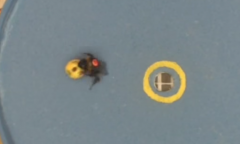By Jenia Cane, | April 01, 2017

The result of the study by scientists from the Royal Veterinary College (RVC) revealed that there are two mechanisms that make the mosquitoes' flight different from that of other insects.
While mosquitoes seem to be one of the most hated insects, do you know that there is something so interesting about them? Have you ever wondered why this insect has an unusual way of flying? A new study has finally revealed the reason behind it.
The result of the study by scientists from the Royal Veterinary College (RVC) revealed that there are two mechanisms that make the mosquitoes' flight different from that of other insects. The researchers were puzzled by this unusual scenario, which motivated them to pursue the study.
Like Us on Facebook
In the past, scientists had believed that the mosquitoes' peculiar flying mechanism was only because of the "angular sweep of their wings," which is said to be less than half compared to that of the honey bee.
However, following the research, it was discovered that aside from using the leading-edge vortices to lift themselves up in the air, which other insects use as well, the mosquitoes also make the trailing-edge vortices and lifting via rotation of the wing as "additional aerodynamic features."
"The usual flapping pattern of short, fast sweeps means that mosquitoes cannot rely on the conventional aerodynamic mechanisms that most insects and helicopters use," Dr. Richard Bomphrey, Reader of Biomechanics at the RVC, said. "Instead, we predicted that they must make use of clever tricks as the wings reverse their direction at the end of each half-stroke."
It was noted that the mosquitoes' wings beat at 700Hz, faster than other insects'.
"Recording mosquitoes during free-flight represented a huge technical challenge due to their small size, extreme wingbeat frequency, and the presence of large antennae and legs, that can mask the view of their wings," Dr. Simon Walker, University Research Fellow at the University of Oxford, explained.
-
Use of Coronavirus Pandemic Drones Raises Privacy Concerns: Drones Spread Fear, Local Officials Say

-
Coronavirus Hampers The Delivery Of Lockheed Martin F-35 Stealth Fighters For 2020

-
Instagram Speeds Up Plans to Add Account Memorialization Feature Due to COVID-19 Deaths

-
NASA: Perseverance Plans to Bring 'Mars Rock' to Earth in 2031

-
600 Dead And 3,000 In The Hospital as Iranians Believed Drinking High-Concentrations of Alcohol Can Cure The Coronavirus

-
600 Dead And 3,000 In The Hospital as Iranians Believed Drinking High-Concentrations of Alcohol Can Cure The Coronavirus

-
COVID-19: Doctors, Nurses Use Virtual Reality to Learn New Skills in Treating Coronavirus Patients











